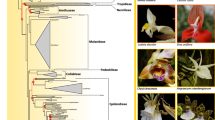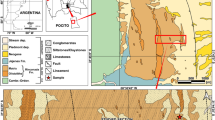Abstract
EVERY botanist musixagree with Dr. Marie Stopes that there should be some ready way to distinguish between the fossil plants which are referred with reasonable assurance to their genera, and those which are merely placed in genera which they seem to resemble, but to which they very probably do not belong. We must also agree that it is unsatisfactory to call every doubtful leaf “Phyllites”, without any serious attempt to indicate its affinities. The use of Gothic type, suggested by Dr. Stopes for the doubtful genera, has some disadvantages, one of them being the inconvenience to the printer. Would it not be simpler to use quotation marks, in the case cited by Dr. Stopes writing Ophioglossum granulatum? The generic name only should be enclosed within commas, as it alone is supposed to be in doubt. The method proposed has the advantage of being already more or less current, and readily understood by any reader.
This is a preview of subscription content, access via your institution
Access options
Subscribe to this journal
Receive 51 print issues and online access
$199.00 per year
only $3.90 per issue
Buy this article
- Purchase on SpringerLink
- Instant access to full article PDF
Prices may be subject to local taxes which are calculated during checkout
Similar content being viewed by others
Author information
Authors and Affiliations
Rights and permissions
About this article
Cite this article
COCKERELL, T. The Names of Fossil Plants. Nature 88, 484 (1912). https://doi.org/10.1038/088484e0
Issue date:
DOI: https://doi.org/10.1038/088484e0



